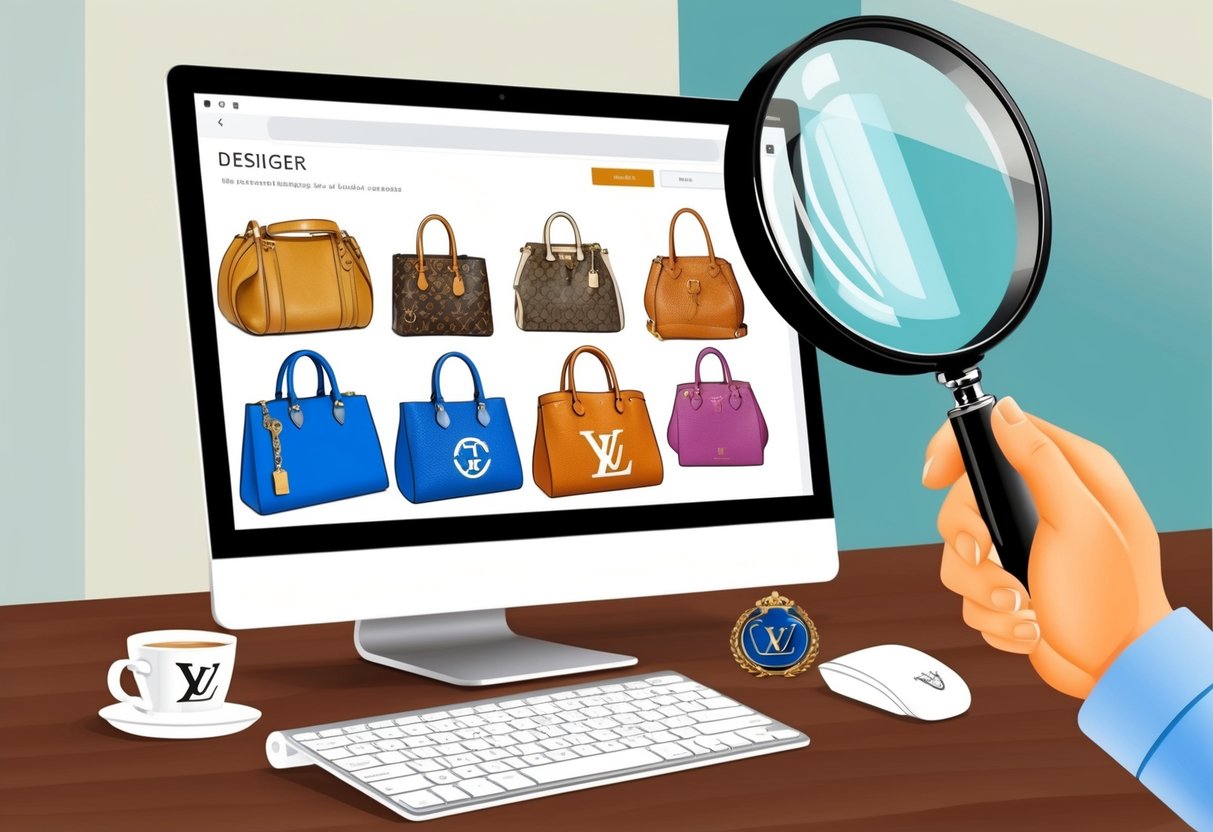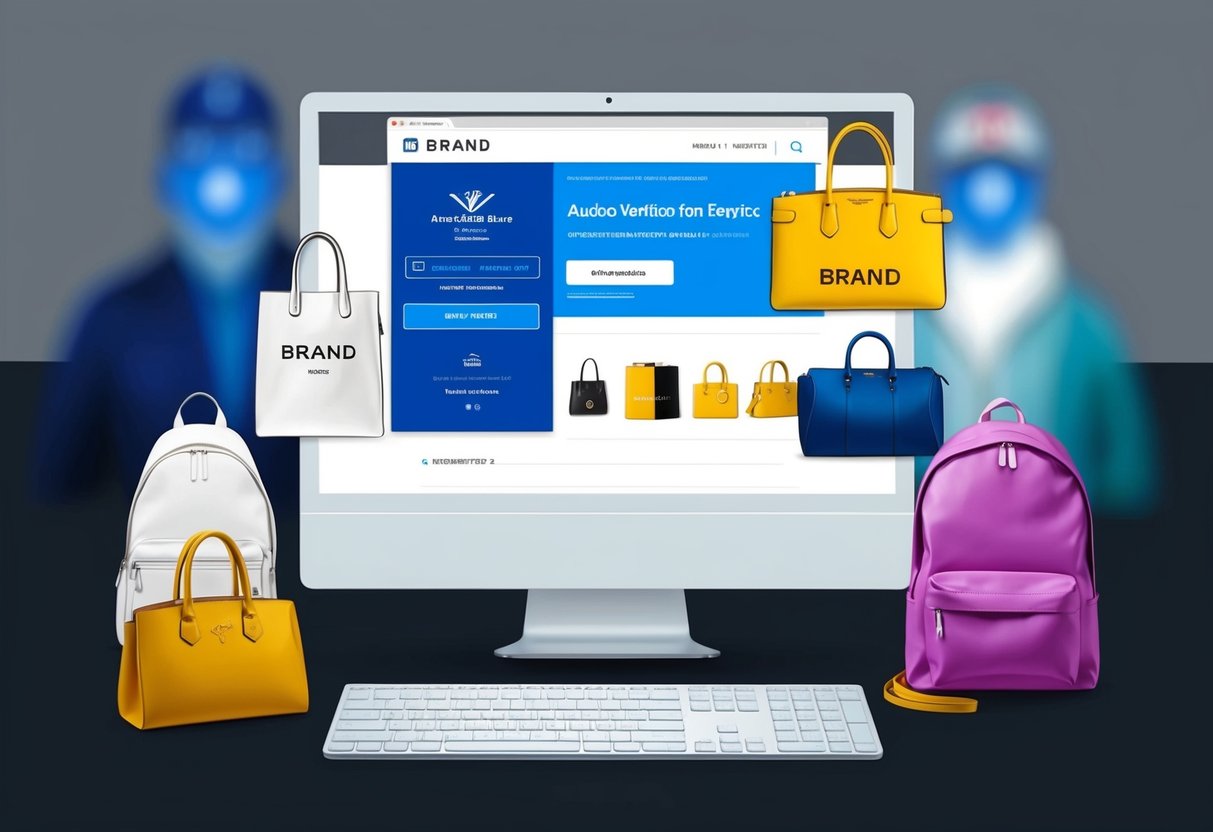
Buyer Protections and Reporting Counterfeits
Online shopping for designer brands comes with risks, but protections exist for those who encounter counterfeit products. Shoppers can report fakes, utilize platform security measures, and pursue refunds or replacements using clear steps and resources.
How to Report Suspected Counterfeit Goods
Anyone who suspects they have purchased counterfeit products should act promptly. One of the most effective ways to report is through official organizations, such as reporting to the U.S. Consumer Product Safety Commission via www.saferproducts.gov or by phone at 800-638-2772.
These channels help ensure authorities track and address dangerous or fraudulent goods. Platforms like eBay, Amazon, and others offer direct reporting tools.
Look for “Report a Violation” or “Report Infringement” links within seller or product pages. Providing detailed information about the item, seller, and transaction increases the chances of a successful investigation.
Consumers can also notify the brand owner directly through their official website. Brands often have dedicated teams managing intellectual property and counterfeit claims.
Sharing purchase receipts, product images, and communication with sellers helps brands take action against fraudulent listings.
Understanding Platform Protections
E-commerce platforms have built-in protections to help detect and reduce counterfeit products. Many reputable marketplaces closely monitor product listings and use algorithms, product verification programs, and customer feedback to flag questionable goods.
Some platforms ban sellers found repeatedly posting counterfeits. Buyers are typically protected by purchase guarantees, such as eBay’s Money Back Guarantee or Amazon’s A-to-Z Guarantee.
These programs promise refunds if items are not as described or are found to be counterfeit. Reviewing a platform’s buyer protection policy before making a purchase gives shoppers a clear understanding of their rights and recourse in case of fraud.
In addition, consumers should shop from authorized sellers, verify seller ratings, and use secure payment systems to further decrease the risk. Marketplace help centers and customer service channels provide assistance if counterfeit goods are suspected, streamlining the claims process for concerned buyers.
Seeking Refunds or Replacements
If counterfeit products are received, prompt action is essential. Begin by contacting the online seller directly and providing evidence—such as order confirmations and photographs—demonstrating the differences from authentic items.
When sellers are uncooperative, escalate the claim through the marketplace’s payment dispute or consumer protection processes. Many online shoppers successfully secure refunds or replacements through buyer protection programs, especially if detailed documentation is provided.
Credit card providers may also assist if the item was purchased with a credit card, initiating chargebacks for fraudulent goods. Keeping thorough records of all communication, product images, and receipts will increase the likelihood of a favorable outcome.
For more details and steps, see guidance from organizations monitoring counterfeit products online.
The Role of Brand Official Websites and Verification Services

Designer brands often invest in dedicated online tools and services to help consumers distinguish authentic products from counterfeits. Using official channels and authentication services increases trust and lowers the risk of purchasing fake luxury goods.
Verifying Products via Brand Channels
When shopping for designer brands online, begin by visiting the brand’s official website. Reputable companies often offer a store locator, detailed product images, and guidance on how to authenticate specific features like serial numbers, holograms, or unique tags.
Look for online platforms that provide direct links to authorized retailers. Official websites also publish warnings about commonly counterfeited items and share tips for safe online shopping.
For example, if a product is registered through the brand’s site and comes with a scannable QR code, this is a reliable sign of legitimacy. Always compare product listings, price points, and packaging details against examples shown on the brand’s site.
Differences in logo placement, stitching, or even the brand’s font may indicate a counterfeit item.
Third-Party Authentication Services
In addition to brand resources, third-party verification services can help confirm the authenticity of luxury goods when shopping online. These companies employ experts who analyze products based on photos or in-hand inspections, offering certificates of authenticity for designer handbags, watches, apparel, and accessories.
Many respected platforms accommodate over 100 luxury brands and make use of up-to-date authentication technology. Services like these are particularly recommended for pre-owned or consignment purchases where risk is higher.
Some specialists even provide a digital report, photo comparisons, and guidance on safeguarding online purchases. For further security, consumers can consult guides on product authentication methods or consider dedicated services that support over 120 brands.
These measures offer consumers transparency and a greater chance of avoiding counterfeit designer goods.
Community Resources and Forums for Authenticity Checks

Relying on experienced shoppers and expert opinions is essential when navigating the risks of counterfeit items in online shopping. Digital platforms and forums provide important tools for verifying products and supporting safe purchasing decisions.
Leveraging Online Communities
Digital communities, such as specialized forums and Reddit threads, are highly effective for buyers who want fast, peer-driven feedback on designer goods. On sites like Reddit’s authenticity discussion boards, users can upload clear photos and details about specific items.
Within hours, members often share insight about labels, stitching, logos, and packaging. Many members highlight useful red flags like inconsistent fonts, misspelled tags, and uneven seams.
These first-hand experiences can be crucial, especially for people new to spotting fake products. Online community members frequently recommend verifying serial numbers, checking for authenticity cards, and comparing with official store listings.
They also share links to brand guidelines and previous cases. This creates a valuable and searchable knowledge base for learning to identify counterfeit items quickly.
Getting Opinions from Experts
Beyond community forums, consulting with trained professionals significantly enhances a shopper’s ability to identify authentic designer brands. Several reputable platforms offer expert authentication services, sometimes for a fee, where specialists examine photos or in-hand details of bags, clothing, or accessories.
Certified authenticators look for subtle hallmarks, such as stitching patterns, material quality, hardware engravings, and factory serial codes. Some brands even maintain directories of authorized authenticators or provide official verification for customers before purchase.
For high-value items, using these expert resources reduces the chance of purchasing counterfeit items and offers peace of mind in the often risky world of online shopping. Their written authentication reports can also support returns or claims with marketplaces, adding an extra layer of consumer protection.



